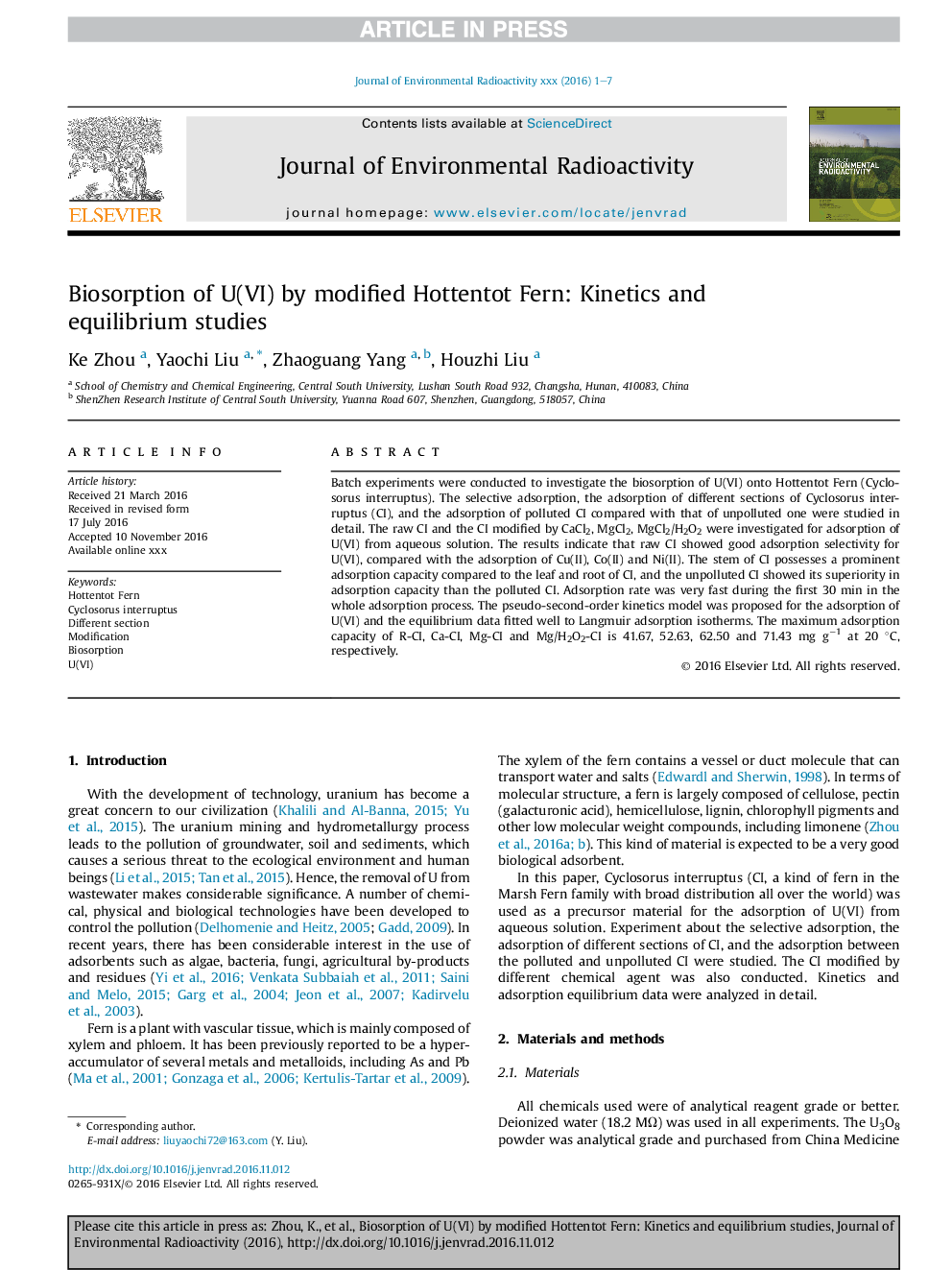| Article ID | Journal | Published Year | Pages | File Type |
|---|---|---|---|---|
| 5477650 | Journal of Environmental Radioactivity | 2017 | 7 Pages |
Abstract
Batch experiments were conducted to investigate the biosorption of U(VI) onto Hottentot Fern (Cyclosorus interruptus). The selective adsorption, the adsorption of different sections of Cyclosorus interruptus (CI), and the adsorption of polluted CI compared with that of unpolluted one were studied in detail. The raw CI and the CI modified by CaCl2, MgCl2, MgCl2/H2O2 were investigated for adsorption of U(VI) from aqueous solution. The results indicate that raw CI showed good adsorption selectivity for U(VI), compared with the adsorption of Cu(II), Co(II) and Ni(II). The stem of CI possesses a prominent adsorption capacity compared to the leaf and root of CI, and the unpolluted CI showed its superiority in adsorption capacity than the polluted CI. Adsorption rate was very fast during the first 30 min in the whole adsorption process. The pseudo-second-order kinetics model was proposed for the adsorption of U(VI) and the equilibrium data fitted well to Langmuir adsorption isotherms. The maximum adsorption capacity of R-CI, Ca-CI, Mg-CI and Mg/H2O2-CI is 41.67, 52.63, 62.50 and 71.43 mg gâ1 at 20 °C, respectively.
Keywords
Related Topics
Physical Sciences and Engineering
Energy
Nuclear Energy and Engineering
Authors
Ke Zhou, Yaochi Liu, Zhaoguang Yang, Houzhi Liu,
